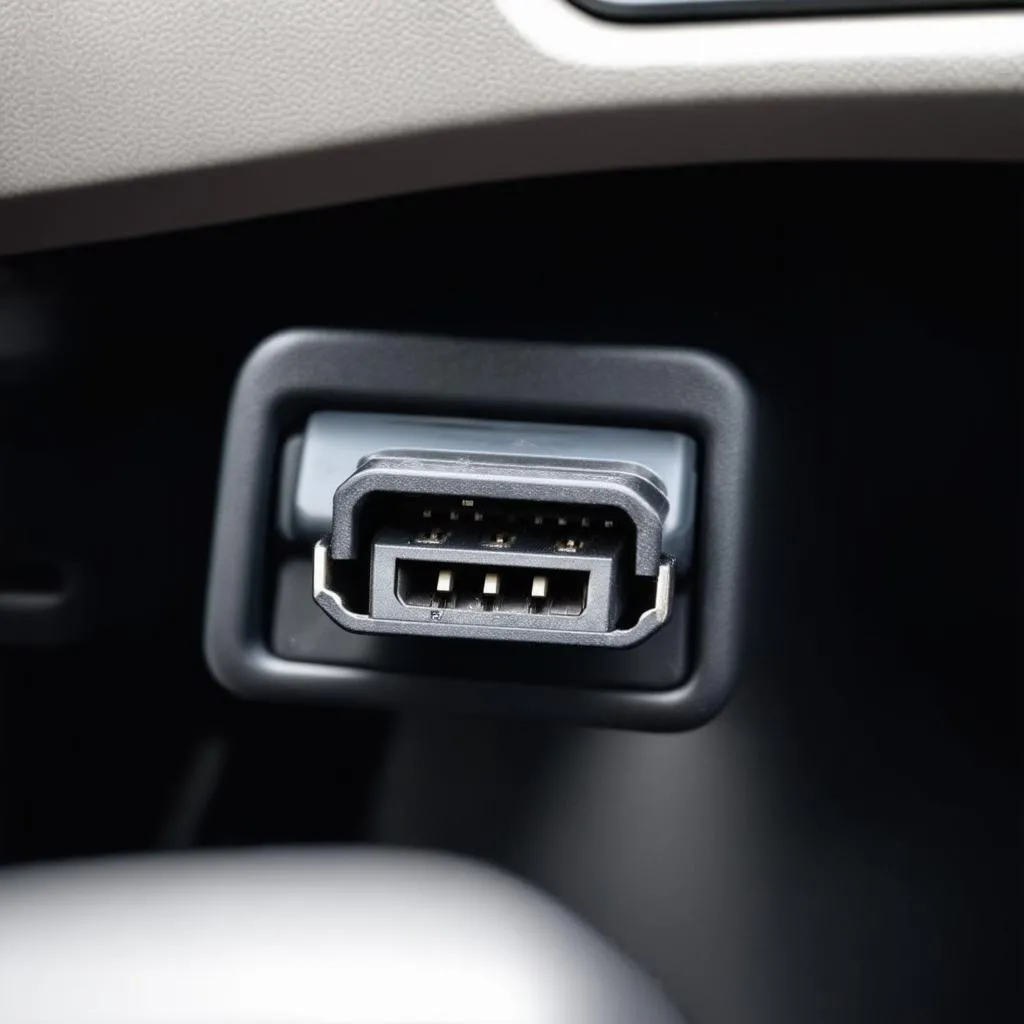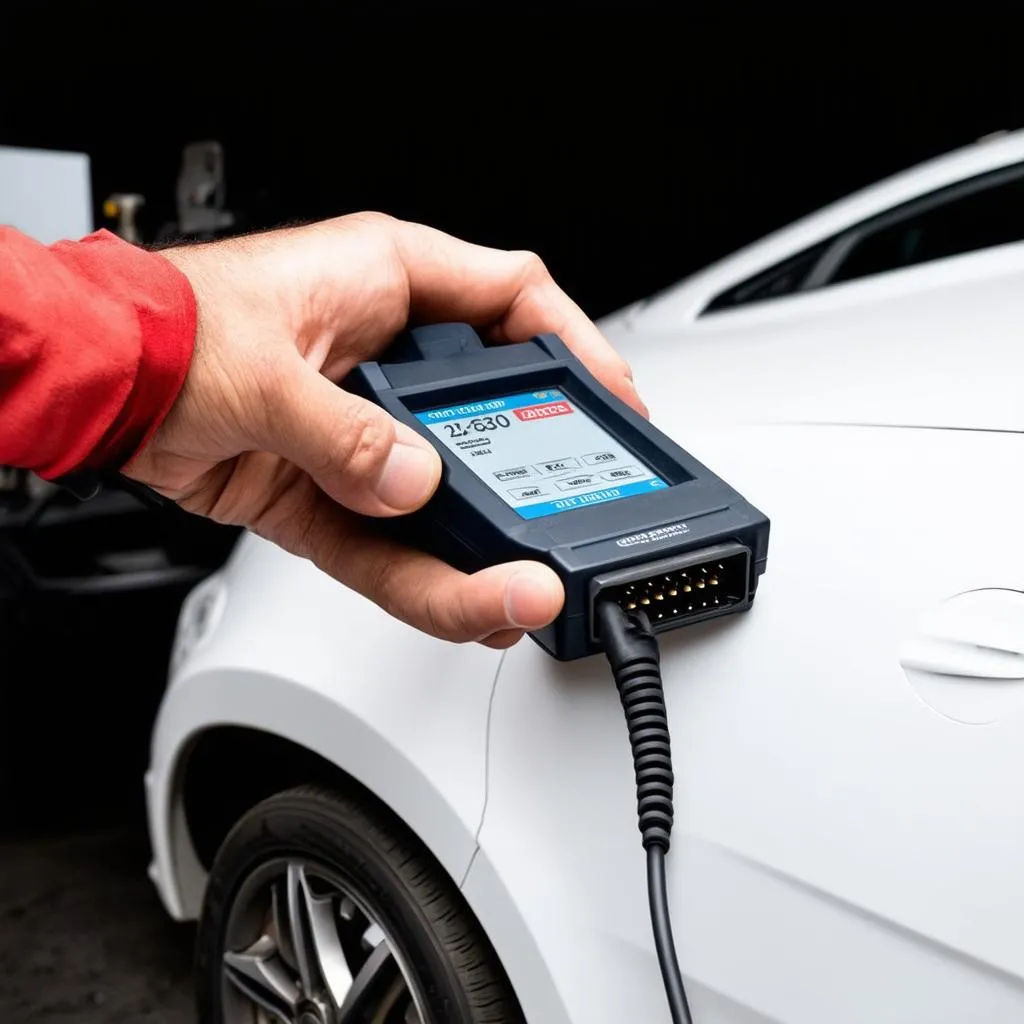“Check engine” light got you seeing red? We’ve all been there – that little yellow beacon flashing on your dashboard, whispering anxieties about costly repairs. Before you start picturing dollar signs draining from your wallet, let’s talk about the unsung hero hiding beneath your steering wheel: the OBD-II port. This little portal is like a window into your car’s soul (or at least its engine), and understanding it can save you time, money, and a whole lot of stress.
What is this Magical OBD-II Port?
Imagine being able to understand what your car is trying to tell you, like having a translator for its engine’s every cough and sputter. That’s precisely what the OBD-II port, or On-Board Diagnostics port, allows you to do. It’s a standardized 16-pin connector, usually located under the driver’s side dashboard, that provides access to your car’s onboard computer and a wealth of diagnostic information.
Think of it like this: your car’s computer is constantly monitoring various systems, from engine performance and emissions to airbag status and anti-lock brakes. When something goes awry, it logs a trouble code. The OBD-II port is the key to retrieving these codes and understanding what’s going on.
 OBD2 Port Location
OBD2 Port Location
Unlocking Your Car’s Secrets: The Power of the OBD-II Port
The OBD-II port isn’t just for mechanics with fancy scanners anymore. With the rise of affordable OBD-II scanners and smartphone apps, you have the power to:
- Diagnose engine problems: Read and interpret those cryptic “check engine” light codes.
- Monitor real-time data: Keep an eye on your car’s performance metrics like speed, RPM, coolant temperature, and more.
- Assess fuel efficiency: Track your driving habits and identify areas for improvement.
- Clear error codes: After fixing a problem, you can use an OBD-II scanner to clear the code and turn off the “check engine” light.
Beyond Diagnostics: Unexpected Uses of the OBD-II Port
Believe it or not, the OBD-II port can do more than just talk to your car’s engine. It can:
- Track your vehicle: GPS trackers that plug into the OBD-II port are becoming increasingly popular for fleet management and even personal use.
- Enhance your driving experience: Devices like performance tuners and eco-driving assistants connect through the OBD-II port, allowing you to customize your car’s performance and fuel efficiency.
- Connect to your smartphone: OBD-II adapters can beam real-time car data to your phone, transforming it into a sophisticated driving companion.
 OBD2 Scanner Connected
OBD2 Scanner Connected
OBD-II: Your Questions Answered
You might be wondering:
- Do all cars have an OBD-II port? Most cars manufactured after 1996 in the United States and after 2001 in Europe are equipped with OBD-II ports.
- Can I use any OBD-II scanner on my car? While most scanners work with a wide range of vehicles, it’s best to choose one compatible with your car’s make and model.
- Is it safe to use an OBD-II scanner myself? Absolutely! Modern scanners are user-friendly and pose no risk to your car when used correctly.
Finding Your Inner Mechanic: Embracing the OBD-II Revolution
The OBD-II port is a powerful tool that puts you in the driver’s seat (literally!) when it comes to understanding and maintaining your car. With a little knowledge and the right tools, you can decode those intimidating “check engine” lights, monitor your car’s health, and even boost its performance.
Looking for more car maintenance tips or help finding the right OBD-II scanner for your vehicle? Check out our other articles on 2005 BMW X3 OBD Port Location, 2013 VW CC OBD Port Location, and 2020 Mazda 3 OBD Port Location.
For expert advice and assistance with installing diagnostic software, don’t hesitate to contact us on WhatsApp at +84767531508. Our team of automotive specialists is available 24/7 to help you unlock the full potential of your OBD-II port.